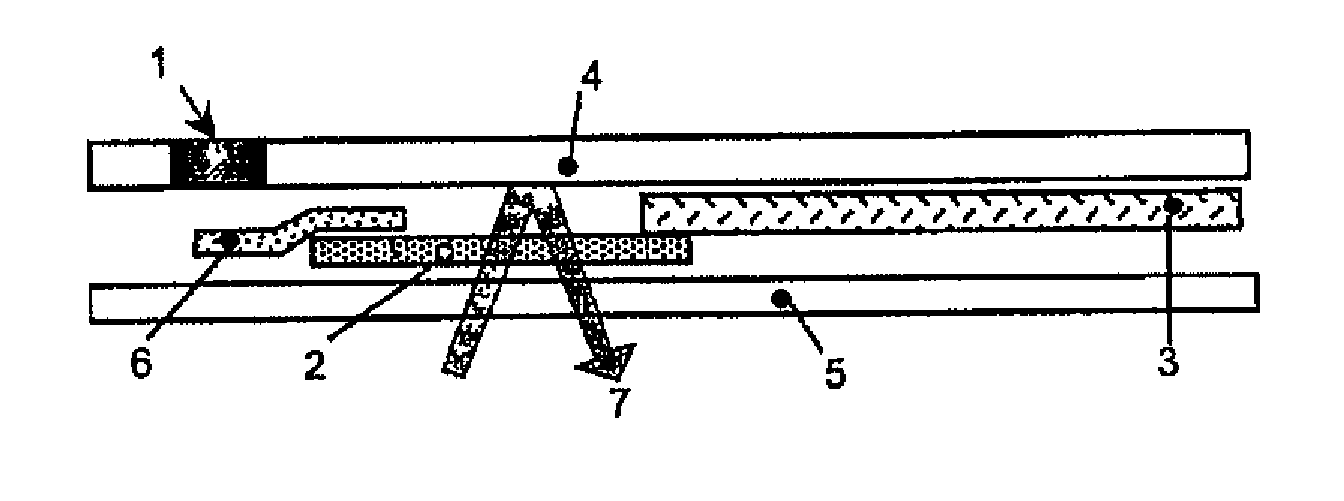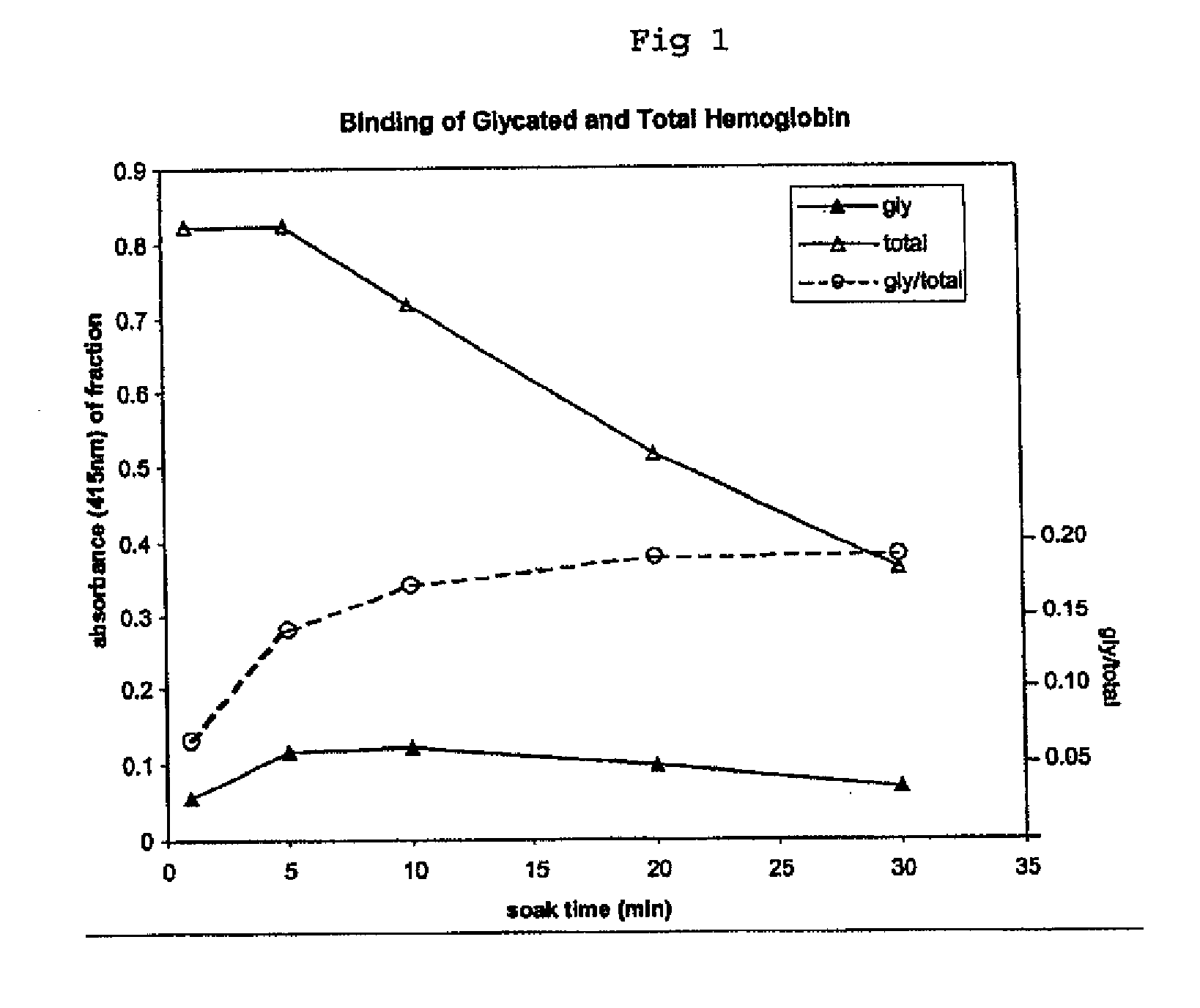Determination of glycated protein
a glycated protein and protein technology, applied in the field of glycated protein determination, can solve the problems of not being able to perform similar tests for glycated proteins and hemoglobin, and achieve the effect of improving the glycated protein and hemoglobin conten
- Summary
- Abstract
- Description
- Claims
- Application Information
AI Technical Summary
Benefits of technology
Problems solved by technology
Method used
Image
Examples
example 1
Preparation of the Boronated Solid Support Matrix
[0083] According to a preferred aspect of the detection method of the present invention, a solid support matrix suitable for use in a strip configuration is prepared by covalently attaching a derivative of boronate, m-aminophenylboronate to a carboxy cellulose based material using a conventional linking chemistry.
Materials
[0084] 1. Solid Support Matrix: cellulose based solid with carboxylic acid groups covalently bound (Sartobind C membrane, Sartorious). [0085] 2. EDC (1-ethyl-3-(3-dimethylaminopropyl)carbodiimide hydrochloride) (Pierce) [0086] 3. Boronate derivative: m-aminophenylboronic acid (SIGMA-Aldrich) [0087] 4. Buffer: 0.1M MES buffer, pH 6.5
Procedure
[0088] A 46.7 mg portion of m-aminophenylboronate is dissolved in 25 mL of 100 mM MES buffer. The pH is re-adjusted to 6.5 after the boronate dissolves. A 28.9 mg portion of EDC is dissolved in the MES-boronate solution. The solid support matrix is soaked in the solution fo...
example 2
Effect of Variable Incubation Times
[0091] An assay using the boronated support of Example 1 in a single measurement assay (“Single Measurement Method”) was compared to a method of the present invention to determine the effect of variable incubation times on the concentration results obtained with each method.
[0092] The following assays were performed to compare the two methods. In the Single Measurement Method assay, blood lysate samples from a non-diabetic individual and a diabetic individual were diluted 1:1 with 500 mM ammonium acetate buffer pH=9.5 with 50 mM Mg++ and the samples were allowed to be in contact with the boronated solid support matrix prepared as in Example 1 for a variety of time periods. Following incubation, the boronated solid supports were rinsed with ammonium acetate buffer pH=9.5. Glycated hemoglobin was eluted with an elution buffer comprised of tris buffer at pH 8.0 containing 200 mM sorbitol. The absorbance of the eluent was measured at 415 mM.
[0093] I...
example 3
Effect of pH on Binding
[0095] The pH of the buffer affects the amount of hemoglobin binding to the boronated support. If the pH is low, then both glycated and non-glycated hemoglobin are bound. If the pH is high, only glycated hemoglobin will bind. FIG. 4 depicts the binding of hemoglobin to the carboxy cellulose membrane (no boronate groups present) following the assay procedure described in Example 2. The membrane loses its ionic binding of hemoglobin between pH 6 and 7 when boronate is not present.
[0096]FIG. 5 depicts the hemoglobin and human serum albumin binding properties of the carboxy cellulose support with added boronate groups, prepared as described in Example 1. Binding of the protein occurs at lower pH's due to the negatively charged carboxyl groups. The protein bound at the higher pH, due to the phenylboronate, is the glycated protein present in the samples.
PUM
| Property | Measurement | Unit |
|---|---|---|
| pH | aaaaa | aaaaa |
| pH | aaaaa | aaaaa |
| volume | aaaaa | aaaaa |
Abstract
Description
Claims
Application Information
 Login to View More
Login to View More - R&D
- Intellectual Property
- Life Sciences
- Materials
- Tech Scout
- Unparalleled Data Quality
- Higher Quality Content
- 60% Fewer Hallucinations
Browse by: Latest US Patents, China's latest patents, Technical Efficacy Thesaurus, Application Domain, Technology Topic, Popular Technical Reports.
© 2025 PatSnap. All rights reserved.Legal|Privacy policy|Modern Slavery Act Transparency Statement|Sitemap|About US| Contact US: help@patsnap.com



